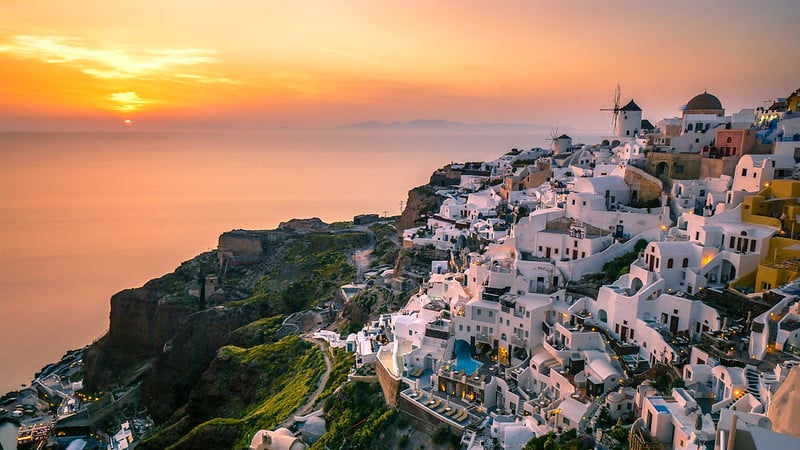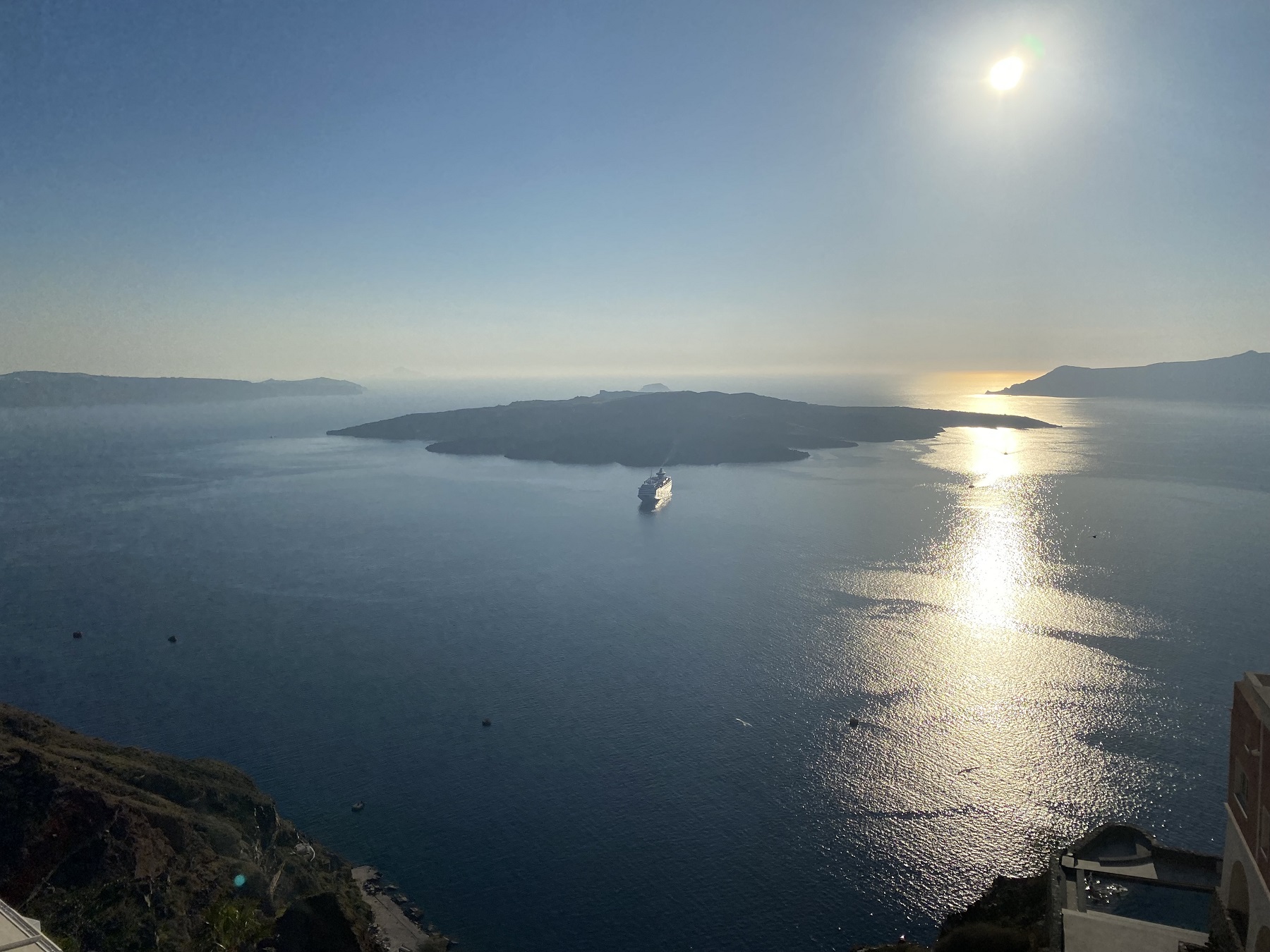
Despite dozens of minor earthquakes that have been shaking the Greek island of Santorini in recent days, Greek scientists have ruled out a massive earthquake hitting Greece’s world-famous island, the President of the Earthquake Planning and Protection organization said.
The tremors, measuring up to magnitude 4.7, according to scientists, are originating from the active Amorgos Fault in the southeastern Aegean Sea, near the neighboring island of Amorgos. Experts and scientists have made clear the current tremors are neither connected to Santorini’s dormant volcano nor to any volcanic activity
“It is certain that [the Amorgos Fault] will not produce an earthquake of a 7.6 magnitude on the Richter scale like it did in 1956 because in order to produce another similar earthquake it needs millennia,” Dr. Efthimis Lekkas, also a professor of Dynamic Tectonics Applied Geology, told Eleftheros Typos newspaper. “But there is the possibility that the energy that is being accumulated, it could produce an earthquake of 5-5.5 magnitude on the the Richter scale, but not of a magnitude over six. All scientists’ opinions converge on this.”
The recent seismic activity has brought back memories of a 7.5 magnitude earthquake hitting Santorini and other Aegean islands almost 70 years ago, the largest to ever be recorded in Europe in the 20th century. It was followed by a tsunami 25 meters high.
At least 53 people were killed and more than 100 were injured. 35 percent of the houses collapsed and 45 percent suffered major or minor damage. Almost all public buildings were completely destroyed.
Lekkas further adds that the situation remains dynamic, and that when there’s still [seismic] activity, it means that “the fault is winding down, it is being emptied out,” while the epicenter of the tremors is moving further north from Santorini. “The problem is we do not know how much energy has been accumulated in that fault and if the remaining energy would produce a significant earthquake,” Lekkas says.
Speaking to Skai TV, he noted that the seismic activity could last anywhere between a few days, weeks or even months. “Every region, every fault has its own characteristics, which unfortunately we cannot define with scientific methods, nature is much more superior to us.”
Vasilis Karastathis, Head of the Institute of Geodynamics in Athens, also confirmed that the epicenter of the seismic sequence is moving northeast of Santorini, which he says “is positive for the island and its structures.” Karastathis also said that while 550 tremors have been recorded and analyzed in the past 10 days, only 183 were of a magnitude over three and had been felt.
Gerasimos Papadopoulos, another prominent Greek seismologist, cautioned on an online post on Sunday, February 2, that the current tremors could indicate a larger pending event. “The number of tremors have increased, magnitudes have risen, and epicenters have shifted northeast. While these are tectonic shifts, not volcanic, the risk level has escalated,” he wrote.
Scientists and experts continue to monitor the seismic activity closely, while several committees are scheduled to discuss the latest seismic data and findings on Monday, February 3. Santorini, along with the neighboring islands of Amorgos and Anafi, remain on alert.

Emergency units arrive on Santorini as part of a series of precautionary measures
In response to the recent earthquakes in Santorini, authorities have announced the closure of schools on Monday, February 3, as a precautionary measure to ensure the safety of children and teaching staff.
Twenty-six members of the Greek Fire Brigade’s Special Disaster Response Unit (EMAK) are on standby in an outdoor area of the indoor stadium of Santorini.
According to local news website Cyclades24, the EMAK team has been deployed to the island as part of precautionary measures due to the recent seismic activity in the area.
The tents set up at the stadium are designated exclusively for the accommodation and operational needs of EMAK, which remains on high alert for any possible emergency.
Residents and visitors to Santorini are advised to avoid large gatherings inside buildings and to stay away from abandoned structures.
Access to the ports of Ammoudi, Armeni, Korfos and the Old Port of Fira should also be avoided.
Greece’s authorities also recommend people who are on the island to remove hazardous non-structural elements in buildings and drain water from swimming pools as precautionary measures.
When traveling within urban areas and on provincial roads, individuals are advised to choose safe routes, particularly avoiding locations with steep slopes where landslides may occur.
In the event of a strong earthquake, residents and visitors are advised to immediate evacuate from coastal areas.